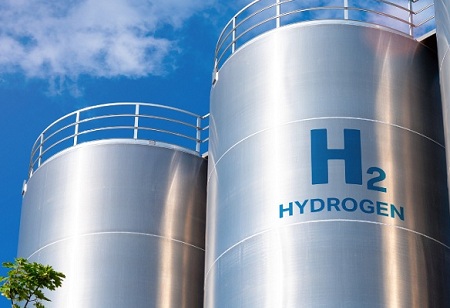
TOKYO: Japan plans to increase its supply of hydrogen sixfold from the current level to around 12 million tons by 2040 in an effort to spur use of renewable energy, a draft revision to its resource policies showed Tuesday.
Prime Minister Fumio Kishida’s government will aim to generate 15 trillion yen in investment from both the public and private sectors over the next 15 years to achieve the goal, the draft said.
At a meeting attended by relevant ministers on Tuesday, Kishida pledged to revise the Basic Hydrogen Strategy, formulated in 2017, by the end of May. Hydrogen does not emit carbon dioxide when combusted.
Japan is aiming for net zero greenhouse gas emissions by 2050, meaning hydrogen is viewed as a key driver in its plan to bring about a green transition, otherwise known as “GX,” an initiative to transform a fossil fuel-based economy into one centered on cleaner energy.
“It is necessary to utilize GX bonds and prompt investment from the private sector” to promote decarbonization in Japan, Kishida said, referring to a new type of sovereign debt, to be issued for the first time during the fiscal year starting April.
The government plans to issue the GX bonds worth about 20 trillion yen from the latter half of fiscal 2023.
Kishida said the government is eager to accelerate building international supply chains to provide more hydrogen in collaboration with Australia, as well as Middle Eastern and other Asian countries.
He also said Japan aims to implement new technologies into Japan’s power supply, such as next-generation “perovskite solar cells” that can directly convert sunlight energy into electricity, by 2030.
In the Basic Hydrogen Strategy, the government promises to encourage the widespread use of vehicles and buses that use hydrogen fuel cells.
The government has also vowed to realize the commercialization of hydrogen power generation by 2030.














